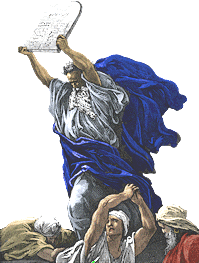
Reprinted from Meridian Magazine (7 Oct 2003)
©2003 by John P. Pratt. All rights Reserved.
 |
This article continues the chronology begun in the last three of this series[1], employing sacred calendars to pinpoint the date of the Exodus to the very day. Sacred patterns are then used to witness that this date is correct. More importantly, however, those patterns testify that Jesus Christ was the promised Messiah including symbolism even of his birth date. In order to understand the significance of those patterns, let us briefly review the order and timing of events of the Exodus.
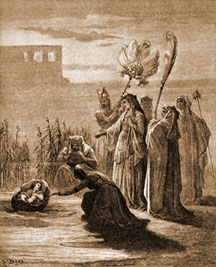 |
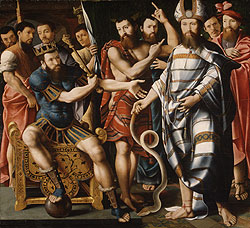 |
On the first day of the next month they reached the foot of Mr. Sinai (Ex. 19:1). The Lord soon commanded Moses to have all the people prepare for two days so that they could see the cloud descend onto the mount and hear his voice for themselves (Ex. 19:6). They did so and on the morning of the third day, there was thunder and lightning, fire and smoke, and they heard the terrifying voice of a trumpet give a long and loud blast. Then they all heard the voice of God revealing the Ten Commandments, a covenant between Israel and God (Deut. 4:12-13, 5:2-22). The people all accepted with one voice the words of the Lord as a covenant and Moses set up twelve pillars, sacrificed animals, and sprinkled the "blood of the covenant" onto the people so they could never forget the importance of the Ten Commandments (Ex. 24:3-8). Then seventy of the elders of Israel ascended the mount with Moses and Aaron and were allowed to actually see God (Ex. 24:9-12).
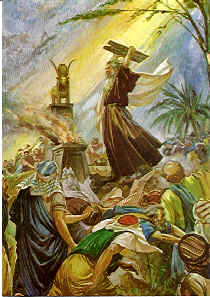 |
The next day (Ex. 32:30) Moses ascended the mount again to plead for forgiveness for his people. The Lord accepted his petition and at the end of forty more days on the mount told him to descend the mount and to return the very next day with two blank stone tablets and a box to protect them (Ex. 34:1-3, Deut. 9:18). This Moses did, and the Lord again wrote the Ten Commandments on the tablets (Deut. 10:1-4). Moses stayed on the mount another forty days (Deut. 10:10), during which he received more laws. When he descended, his face glowed so brightly that it was covered as a courtesy to onlookers (Ex. 34:28-35).
The next five months were spent building the tabernacle as instructed. On the eighth day after the high priest Aaron had donned his garments, the tabernacle was raised on the first day (1 Nisan) of the next year (Ex. 40:2,17; Jasher 83:1-4).
Late in the following summer, when they approached the land of their inheritance, 12 men were sent to spy out the land. After forty days they returned, with ten of them concluding that even God could not overcome the opposing forces. In response, the Lord then decreed that the host were condemned to spend forty years in the wilderness, one year for each day of their trip, until everyone except the two who brought a good report had died off (Num. 14:29-35).
Very little is recorded about the next 38 years (Deut. 2:14), but then the record goes into detail about the entire 40th and last year in the wilderness. Events that year included smiting the rock to bring forth water when Moses forgot to give the Lord credit (Num. 20:2-13), the brazen serpent on the pole (Num. 21:4-9), the prophecy of Balaam (Num. 22-24), the writing of the Book of Deuteronomy (Deut. 1:3), and the translation of Moses at age 120 (Deut. 34:5-8).[2]
The forty years expired almost immediately after the one-month mourning for Moses (Deut. 34:8). Joshua then led the children of Israel into the promised land. It was done miraculously when he parted the Jordan River waters and they passed over into Canaan on the day 10 Nisan, being the first month of the 41st year of the Exodus (Josh. 4:19). On that same day, all the men were circumcised (Josh. 5:2-9). Then they kept the Passover and on the following morning the manna ceased (Josh. 5:10-12).
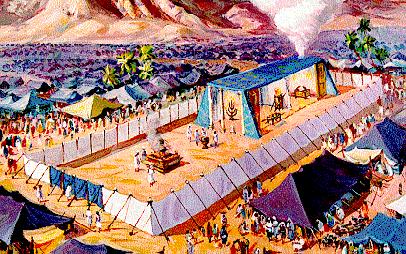 |
2.1.1 400-year Bondage. The Lord told Abraham that his descendants would be in bondage 400 years (Gen. 15:13-16). Using that statement to date the Exodus requires knowing when Abraham lived (we saw the 60-year uncertainty in last month's article), on knowing if the Lord meant exactly 400 years or about four centuries, and on knowing the beginning point. The obvious starting point is when Jacob (Israel) entered Egypt, but that has serious problems. Moses is the grandson of Kohath, who entered Egypt with Jacob. How could one man and his grandson's life span 400 years? These people all lived over a century, but one can only stretch the numbers so far. Kohath lived 133 years, his son Amram lived 137 years, and his son Moses was 80 at the time of the Exodus (Ex. 6:18, 20; 7:7). If both Amram and Moses were born when their fathers died, there are only a maximum of 350 years (133 + 137 + 80) available for the Egyptian bondage.
Thus, there is no researcher today known to me who believes the bondage literally lasted 400 years.[3] One solution is to try to find an earlier point to start reckoning from. Perhaps the most popular choice is to start when Abraham left Haran at age 75 (Gen. 12:1-4). That requires really stretching what the Lord said because Abraham had the vision several years after he left, and he was not in bondage, nor was his son Isaac. It was 215 years from when Abraham was 75 until Jacob was 130, his age at entering Egypt, so that would cut the stay in Egypt to 185 years.
But 185 years is too short a time because when the Israelites left they counted over 600,000 adult men (Num. 1:46). Allowing for women and children, we'd expect that to mean about 2,000,000 people. They only had 70 when they entered (Gen. 46:27), so now the problem is that the growth rate seems impossibly large.
A more typical solution is to choose the birth of Isaac as the starting point of the bondage, which results in a 210-year stay in Egypt. That is adopted in the Book of Jasher (Jasher 81:3). That implies a 5% population growth rate per year, which is much higher than today's maximum of 3.5% found in Arab countries, but it is not inconceivable.[4] But now the problem is that we have juggled the years so much to get a reasonable answer that we've totally ignored what the Lord told Abraham.
2.1.2 430-year Sojourn. A more promising scripture is one that tries to communicate something very precise about the date of the Exodus. The Exodus was 430 years to the very day from the beginning of the sojourn of Israel (Ex. 12:41-42), whatever that means. We've already seen that even 400 years is too long for the sojourn in Egypt, but fortunately some versions of the Bible say the sojourn refers to both the stay in Canaan and Egypt.[5] Now the question is, where is the starting point? The quick answer is to note that the 215 years from Abraham's entering Canaan to Israel entering Egypt equals just half of 430. Thus, one can conclude that there were 215 years in Canaan and 215 years in Egypt. That was a popular interpretation at the time of Christ, and was implied by the apostle Paul (Gal. 3:16-19), and explicitly stated by the ancient Jewish historian Josephus: "They left Egypt ... 430 years after our forefather Abraham came into Canaan, but 215 years only after Jacob removed into Egypt."[6] Thus, again reasonable numbers have been obtained by ignoring what the scripture said, which mentioned nothing at all about Abraham.
 |
2.1.4 Egyptian Chronology. Another approach is to trust other chronologies more than the Bible, especially those of Egypt. It has been very difficult to find any description of the plagues of Egypt in a time period that has seemed acceptable and many scholars have concluded that the Exodus occurred about 1200 BC. There is little reason to believe Egyptian chronology because it is based on lists of kings rather then recorded astronomical observations. Moreover, it is strongly suspect because it places the founding of Egypt before 3000 BC and the evidence for the Great Flood occurring in 2343 BC is now compelling. If Egypt was founded after the Flood (Abr. 1:23-25), then those dates are indeed off by centuries. In any case, the ages in Egypt are in such chaos that it's not worthwhile to seek for a firm foundation there. The Bible is much more accurate.
Now the question is, what was the starting point of the interval? We have seen that it cannot be the time that Israel entered Egypt because they couldn't have been in Egypt more than 350 years. Let us read exactly what the scripture states, and look for a hidden meaning:
Now the sojourning of the children of Israel, who dwelt in Egypt, was four hundred and thirty years.
And it came to pass at the end of the four hundred and thirty years, even the selfsame day it came to pass, that all the hosts of the LORD went out from the land of Egypt. (Ex. 12:40-41)What if the meaning is, "Now when Israel and his descendants had lived four hundred and thirty years, on that very day, all the hosts of the Lord went out from the land of Egypt." In other words, it is telling us that the day on which they left Egypt was Jacob's 430th birthday. Others have suggested that Jacob's birth is the right date to reckon from, without realizing that the verse actually is indicating to do just that.[7]
The birth of Jacob is a perfect starting place, because we saw in last month's article that it was on Passover, and also on 1 Birth on the Venus calendar, a unique date in history. Reckoning exactly 430 Hebrew years later brings us to Thu 9 Apr 1462 BC as the (Passover) date of the Exodus. As we shall see there is much supporting evidence that that is the correct date.
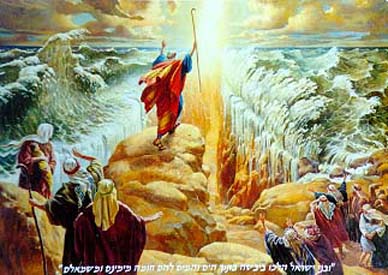 |
How can we know if these dates are correct? The Lord has assured us that he will always provide patterns so that we may know the truth of all things (D&C 52:14). Let us now look at several patterns which are explicitly stated in the Biblical account which testify that this date is correct.
3.1.1 Thursday Exodus. One result of the pattern is the Exodus must have occurred on a Thursday. That is because the manna first appeared 31 days after the Exodus, and it must have begun on a Sunday because it began the 7-day cycle. Counting back 31 days from a Sunday results in a Thursday. Thus, 1462 BC qualifies as a possible Exodus year because Passover occurred on a Thursday that year.
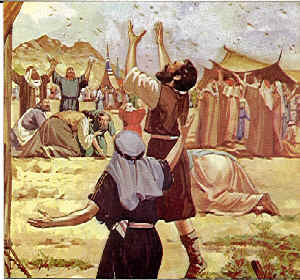 |
The day on which the manna stopped was the day after Passover after they had entered the promised land. That was Easter Sunday on the Hebrew Calendar (and our calendar), the day of the waving of the shear offering. That day, Sun 18 Apr 1422 BC, was also the same day on the priest cycle on which the Savior resurrected. Thus, there is a double witness of Easters and of the priest cycle that the manna symbolized Jesus Christ and that these dates are correct.
3.1.3 Ten Commandments on Firstfruits Sunday. There are two indications that the Ten Commandments were given on a Sunday. First, the Lord told the Israelites to prepare for two days and on the morning of the third day a long blast on the trump would herald the coming of the Lord. That is very reminiscent of the many times the Savior said he would rise on the third day from his death. As has been extensively shown in my articles, the Savior died on Friday and resurrected on Sunday morning. Moreover, the long and loud blast on the trump is associated with the resurrection (D&C 29:13, 88:94-97). Thus we might expect that the morning of the third day was a Sunday morning. The other indication that it was a Sunday is that Mt.Sinai was enveloped in smoke and clouds for six days beginning on the day of the Ten Commandments. Then it cleared and Moses was called up into the mountain on the seventh day. Again, six days of darkness followed by a sacred call on the seventh sounds a lot like a week.
Thus, it is proposed that the Ten Commandments were given on the morning of the Sunday after the arrival at Mount Sinai. That day was Sun 31 May 1462 BC, being Firstfruits on the Hebrew calendar. Even the fact that the Bible explicitly states that it was in the morning was important, because that part of the day coincided with the Priestly day of 1 Seorim, which name means "grain" and which corresponds to the offering of the wheat at Firstfruits, also known as Pentecost. As a confirming witness, note that on the Day of Pentecost after the Savior's Resurrection, the priest from this same course was presiding.[8]
3.1.4 Firstfruits Always on Sunday. Firstfruits, also known as Pentecost or the Feast of Weeks, is always held exactly seven weeks after the Sheaf Offering or Waving of the Sheaf (Lev. 23:15 17). There is an apparent ambiguity in the scriptural instructions of just when to hold the Sheaf Offering, which in turn leads to the same uncertainty in the date of Firstfruits. At the time of Christ the Pharisees always held the Sheaf Offering on the second day of Passover (16 Nisan), and hence Firstfruits seven weeks later on 6 Sivan. But the Sadducees held the Sheaf Offering on the Sunday morning after Passover (15 Nisan), so it fell some time from 16-22 Nisan. Accordingly, Firstfruits for the Sadducees was always on the Sunday from 6-12 Sivan.
In my first articles, I had no clue which of the two interpretations was right, because the Savior's resurrection fell on a day when both were correct: Sun 3 Apr AD 33 was both a Sunday and also 16 Nisan.[9] This is the first historical date which clearly shows which of the two interpretations is correct because Firstfruits clearly fell on a Sunday, but it was not 6 Sivan, but rather 8 Sivan. Accordingly, it follows that the Sadducees had the correct interpretation: both the Sheaf Offering and Firstfruits are to be celebrated on Sunday. That differs from the modern Hebrew calendar, which followed the tradition of the Pharisees that Firstfruits is always on 6 Sivan.
3.1.5 Hebrew Easter. Henceforth my articles shall refer to the Sheaf Offering as the "Hebrew Easter" for several reasons. First, the symbolism of offering the firstfruits from the ground is so clearly symbolic of the Savior's resurrection (1 Cor. 15:20) that there is no need to veil the meaning any longer. Second, I make comparisons of dates side-by-side in columns and it is much easier to see the similarity if the same name is used as on other calendars. Finally, and ironically, the formula developed long ago to determine the Christian date of Easter, which was purposely designed so that Easter could never fall on the Jewish Passover, but instead would fall on the Sunday after Passover, turns out to be exactly the correct method for determining the Sheaf Offering.
3.1.6 Resurrection on the Eighth Day. Why do Christians worship on Sunday rather than Saturday? As is well known, it is because the Savior resurrected on Sunday. But was there any special reason that the Savior chose Sunday on which to resurrect? Might he have resurrected on Tuesday? The apostle Barnabas answered that question for us in a book no longer in the Bible. He explained that even as the earth's temporal existence will be seven one-thousand year days, after which it will be resurrected, so also the Savior resurrected on the eighth day of the week (Barnabas 8:9-10).[10] Of course, the eighth day of the week is the same as the first, Sunday, but it is important for us to understand that the symbolism really refers to the eighth day.
 |
3.2.1 The 40-Day Short Step. The Sacred Round is designed to count days by forties. It employs two simultaneous counts: the trecena of 13 days in which days are numbered consecutively from 1 to 13, and the veintena of 20 days in which each day is assigned a picture. The veintena begins with the picture Light, followed by Wind, and then Temple. The cycle begins on the day 1 Light, followed by the day 2 Wind, and then 3 Temple, because both cycles advance independently of each other. After forty days, where is the count? The trecena has advanced by 3 cycles of 13 days plus one, so it is on day number 2. The veintena has advanced by exactly 2 cycles of 20, so it is again on the day Light. So forty days after the day 1 Light comes the day 2 Light. Forty days later is 3 Light. Thus, these cycles automatically count by 40-day increments. That unit of time was well known to the Native Americans, but to the best of my knowledge was unknown to the Israelites. The Native Americans referred to it as the "foot" or as the "step" because it was said that God stepped off the universe in these units at the Creation. The evidence in this paper strongly supports that belief. Following their lead, I will refer to the 40-day unit of time as the "short step," anticipating that we shall also see the need for a longer step.
3.2.2 Three Short Steps. Moses was on the mountain for three sets of forty days. He descended at the end of each, but the scripture makes in clear that after the first two descents that he went up again the next day. On his first descent he destroyed the golden calf, on the second he hewed two stone tablets to replace those he broke, and when he descended the last time, his face glowed so brightly that his face was covered with a veil. Thus, he was on the mountain for 120 consecutive days, or three short steps.
So what is that all about? It was the Lord who called him on the first day and determined the timing of the whole process. To understand what it might mean, let us remember that the Lord told Moses he counts one year to a day (Num. 14:34). Moses lived 120 years, and at the end he was translated which might correspond to his glowing as he descended the mount. Could those 120 days have been a miniature representation of his life?
Moses was 80 years old when he went to Pharaoh, which could correspond to the second descent after 80 days from the mount, so that fits perfectly. Did anything occur when Moses was 40 years old that might correspond to the end of the first 40-day short step? The speech which Stephen gave before his stoning stated that Moses was 40 years old when he killed the Egyptian, which precipitated his leaving Egypt (Acts 7:23). If that is correct,[11] then we have a perfect pattern match and Moses ascending Mt. Sinai might well have represented his life in miniature (see Table 1).
| Number | Days | Years |
|---|---|---|
| 0 | Ascend Mount | Born |
| 40 | Destroy Egyptian Idol | Leave Egypt |
| 80 | Hew Tablets | Ten Commandments |
| 120 | Transfigured | Translated |
So what dates on our calendar do they correspond to? The Bible gives the precise date that God called Moses up to the mountain. It was on the seventh day after the six days that dark clouds covered Sinai. The first day of clouds was Firstfruits, Sun 31 May 1462 BC. The following sabbath began on Fri 5 Jun 1462 BC pm*. That was the day 1 Jaguar on the Sacred Round. The Jaguar most likely symbolizes the Aaronic Priesthood, so that seems appropriate. Forty days later was the day 2 Jaguar, one more short step is 3 Jaguar, and the day he finally descended from the mount was 4 Jaguar. That day was Sat 3 Oct 1462 BC, which was also the feast of Tabernacles on both the Hebrew and Enoch calendars. This is an amazingly perfect fit, starting from a date which is specified to the very day in the account. The fact that the 120 days corresponds to three short steps on the Sacred Round, both began and ended on the sabbath, and culminated in a double Feast of Tabernacles on the day representing his translation is much more than we could have hoped for to witness that we have the Exodus date correct.
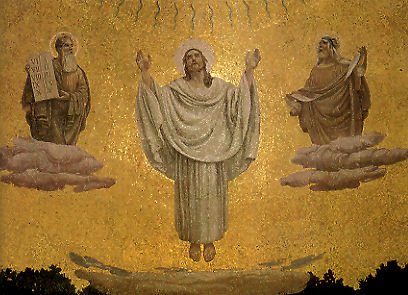 |
| Deliverer | Hebrew | Enoch | Enoch Fixed | Sacred Round |
|---|---|---|---|---|
| Moses | Tabernacles | Tabernacles | — | — |
| Christ | Atonement | Tabernacles | Tabernacles | 13 Light |
3.2.4 Mercury's 39-day Gestation. The planet Mercury disappears for about 35 days when it is on the far side of the sun, which corresponds on its calendar to the 39-day interval between its conception on the day 1 Creation and its birth on 1 Birth. In past articles we have seen that many times, a single 40-day period often corresponds to the forty days beginning on 1 Creation and ending on 1 Birth. This is especially true when the interval corresponds to a birth-like event, such as the Savior being presented at the temple on the fortieth day after his birth, when he fasted for forty days after his (birth-like) baptism, and the forty days of rain at the rebirth of the earth at its baptism. There was another 40-day period during the Flood, being from when the waters abated (150 days after the rain stopped) until when the raven was released (Gen. 8:3-7). Noah was probably not aware of either of these periods, but the Lord was. According to the chronology in these articles, that 40-day period was from Sat 24 May 2342 BC pm* until Thu 3 Jul 2342 BC. On the Lord's calendars the water abated on the day 1 Water and the raven was released on 2 Water. Again, that is a perfect alignment with the Sacred Round short step (Water being the symbol of baptism) of dates that are given to the very day in Genesis. Genesis is definitely not a bunch of campfire stories, but an inspired document that only God could have written.
Returning to the Exodus account, the 40-day spying episode fits this pattern perfectly. This time we are not told the exact day it started, probably because Moses didn't keep track of that. (In these articles, I take the position that Genesis could only have been pure revelation from God to Moses, whereas the other four books of Moses contain many revelations from God, but also the words of Moses.) I don't believe that a 40-day trip was planned because there is no evidence that the Israelites knew of any 40-day period. But the Lord knew it was exactly forty days and made a point that it was symbolic of the forty years they would be in the wilderness. Thus we might expect the period to tie to the Mercury cycle even as the forty years could be a Mercury/Venus realignment interval.
We know when the spying trip began to within about a month, and when we check there, we find an ideal interval with other witnesses that it is correct. Those dates are summarized in the following table along with similar 40-day dates related to the birth of Mercury, and the short step.
| Event | Gregorian | Sacred Round | Mercury |
|---|---|---|---|
| Flood begins Rain stops | Sat 16 Nov 2343 BC Wed 25 Dec 2343 BC | — | 7 Creation 7 Birth |
| Flood abates Raven released | Sat 24 May 2342 BC pm* Thu 3 Jul 2342 BC | 1 Water 2 Water | — |
| Ascend Mt. Sinai Golden Calf Hew tablets Transfigured | Fri 5 Jun 1462 BC pm* Wed 15 Jul 1462 BC Mon 24 Aug 1462 BC Sat 3 Oct 1462 BC | 1 Jaguar 2 Jaguar 3 Jaguar 4 Jaguar | —
|
| Begin Spying End Spying | Tue 12 Jul 1461 BC Sat 20 Aug 1461 BC | — | 1 Creation 1 Birth |
| Savior born Savior to temple | Wed 5 Apr 1 BC pm* Sun 14 May 1 BC | 1 Reed 1 Grass | 1 Creation 1 Birth |
| Savior baptized Begin fast Ends fasting | Sat 6 Oct AD 29 Sun 7 Oct AD 29 Thu 15 Nov AD 29 | 13 Water 1 Dog 1 Water | 0 Creation 1 Creation 1 Birth |
A confirmation that the spying dates are correct is that the ending date is also 1 Creation on the Venus calendar, so that the two dates are just the reverse of the dates at the parting of the Red Sea. Now we will see yet another witness of the correctness of all of these dates as we look at the entrance into Canaan after the forty years had expired.
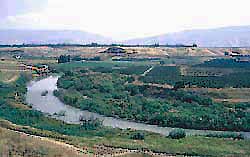 |
How often does such a triple start date occur? New Year's Day will occur on 1 Light about once every 260 years, and that day would be also 1 Creation (Mercury) one time in nine, or once in 2,340 years. Doing a computer search for all such dates in history verifies that expectation: there were only 3 dates in 7,000 years on which those three calendars had their first days coincide during daylight hours. So just for those three calendars, the entry date into Canaan was a rare date indeed. But if we were also to specify that the date must be either 1 Birth (Venus) or Passover (Enoch), then it would be the only such day in history, and it was both of those. Such a day only occurs once in 14,300 years so it is amazing that the one such date in history just happened to fall precisely to the day at the end of forty years from the crossing of the Red Sea. And of course the triple "beginning" symbolism was ideal because it was the beginning of Israel's inheritance of the land promised their Father Abraham many centuries previous. The hand of God in designing these calendars becomes more apparent with every date analyzed. And it becomes clear that the solar system did not just happen by chance, but was designed to be a huge timepiece to visualize this incredibly intricate set of calendars.
3.3.3 The 40-Year Long Step. As this article was nearing completion, it was discovered that the same magic that works for counting the 40-day short step with the Sacred Round also works for counting years. Moreover, it works simultaneously for counting with both the Venus and Mercury calendars. This discovery of Thu 2 Oct 2003[13] opens up an entirely new aspect of the Sacred Round and Venus and Mercury calendars, allowing extended periods to be reckoned in sets of forty years, which thing I never had supposed. It also led to the discovery that same day of probably the best scientific witness yet that Moses typified Christ and that Christ was born during the night preceding Thu 6 Apr 1 BC.
We saw above that the Venus and Mercury calendars realign after forty years. In particular, beginning with the Red Sea Parting day 1 Wind, 1 Birth (Venus), and 1 Creation (Mercury), after forty years we come to 1 Light, 1 Birth (V), 1 Creation (M). What was the very next day? It was 2 Wind, 2 Birth (V), 2 Creation (M). In a manner exactly analogous to the definition of the short step, we can now define a "long step" to be a period of exactly 14,600 days, which can be used as a precise interval to measure time. That is, one long step after 1 Wind is 2 Wind, and another long step brings one to 3 Wind, in a manner exactly analogous to the short step. How long will such steps also keep aligned with both Mercury and Venus? Under the best starting conditions they could keep aligned for up to 6 long steps.
Would God use that long step? One indication that he might is that he says he counts days and years the same, and the Sacred Round and orbits of Venus and Mercury are perfectly arranged to do just that. But perhaps a better indication is that those ideal starting conditions occurred at the birth of Jesus Christ. Evidence indicates that Christ was born on Wed 5 Apr 1 BC pm*[14] which was 1 Reed, 1 Creation (V), 1 Creation (M). The clue that God might be using this system is that both Venus and Mercury are aligned near the ideal starting positions so that they stay synchronized for 5 long steps, ending at Sun 16 Feb AD 200, 6 Reed, 6 Creation (V), 6 Creation (M). Much more investigation is needed to see if one system of long steps could span all of history, but it is the first promising use of 40-year intervals for that purpose so far. Until now, a few isolated occurrences of 40-year intervals were known, but there was no way to link them together.
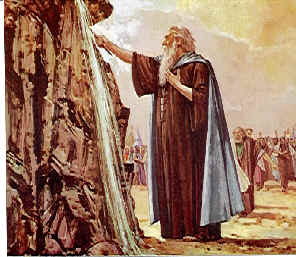 |
3.3.5 Christ's Birth Date Symbolized. Having discovered the long step, we can ask if it was used to measure the 120-year life of Moses, being about three long steps. The answer again links directly to Christ. The beginning day of the first long step of Moses' life was Mon 3 Feb 1542 BC, 1 Reed, 1 Creation (V) and 1 Birth (M). That is exactly the same as the Savior's birth date on two calendars, being 1 Reed and 1 Creation (V). That day was 26 Shebat (Hebrew). For reasons discussed below, that does not appear to have been Moses' actual birth date, but shortly thereafter. Counting by long steps brings us to 2 Reed, 2 Creation on Sat 24 Jan 1502 BC, then 3 Reed, 3 Creation on Thu 15 Jan 1462 BC, and finally 4 Reed, 4 Creation on Tue 5 Jan 1422 BC. This final date was 2 Shebat (Hebrew), which starts the next long step. That means that the last day of the 3 long steps of his life ended on 1 Shebat, which is precisely the day on which the Book of Deuteronomy began to be given (Deut. 1:3). Shortly thereafter he said that his 120th birthday had arrived (Deut. 31:2). Apparently it was right on that birthday that the Lord told him he would be taken in a few days, and on the same day he wrote a song and blessed Israel. Later he ascended the mountain, never to be seen again (Deut. 31:14, 22; 32:48-49; 33). The traditional day for his translation was early in the next month (Adar1),[15] after which Israel mourned for him for thirty days. There was a thirteenth month (Adar2) that year, providing ample time for mourning before crossing the Jordan in Nisan. Thus, the birth date of Moses was most likely some time in Shebat.
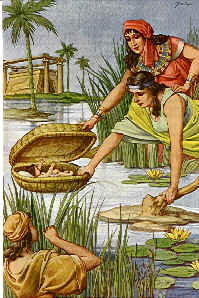 |
The Lord always provides at least two witnesses, and it turns out there was a similar sign in the early days of Adar, the twelfth month of the year, when Hebrew tradition says that Moses was translated. On Sat 6 Feb 1422 BC (4 Adar1) there was a very similar conjunction of Venus and Saturn with the planets again less than a moon-width apart.
The conjunctions of Saturn seems important for the following reason. When the solar system was designed, the Moon and Saturn were apparently intended to be markers of the day-year pattern. The period of the moon's phases is about 29.5 days and the period of Saturn's cycle through the 12 zodiac constellations is 29.5 years. For ease of calculation, let's round those numbers up to 30. Moses' life of 120 years can be thought of not only as three long steps of 40 years each, it was also equal to four cycles of Saturn of 30 years each. Similarly, his stay on the mountain was not only three short steps of 40 days each, it was also four lunar months of 30 days each.
Thus, the Lord clearly illustrates his day-year pattern in his wonderful clock in the sky using the Moon and Saturn. Moreover, he has created fast moving hands like Venus which align with the slow moving hands like Saturn to tell time precisely even as a second hand sweeps over an hour hand to tell time to the very second.
Thus, Moses' birth date was most likely Wed 22 Jan 1542 BC pm*, which evening began the holy day 15 Shebat. If that is correct, it might shed light on some important dates of the restoration such as the birth date of Hiram Smith on Sun 9 Feb 1800 pm*, 15 Shebat[16], and the calling of the first twelve apostles on Sat 14 Feb 1835, which was 15 Shebat and also the Last Day of Passover on the Enoch Fixed calendar.
 |
The evening of Tue 28 Jul 1547 BC pm* began the Hebrew holy day 1 Ab, being the first day of the fifth month, also 9 Midsummer (Midsummer Fast, Enoch) as well as 1 Wind, 1 Birth (V), 1 Creation (M). Thus it was a holy day on five sacred calendars. But what indicates this to be her birth date is that the last three of those holy days coincide exactly with date of crossing the Red Sea. Moreover, the tie to her brother Aaron is indicated in that the precise day of Aaron's death is recorded in the Bible as being 1 Ab (Num. 33:38).[19]
Just how often does a day occur like the Red Sea Parting, being 1 Wind, 1 Birth (V) and 1 Creation (M), not even requiring it to be holy on any other calendar? The results of my exhaustive computer search indicate that there are only two such dates in the 1,800 years from 3100 BC to 1300 BC. Those two rare dates were the Red Sea Parting and the date proposed for Miriam's birth, and they were both holy on the Hebrew calendar also, which strongly indicates they were not chance coincidences.
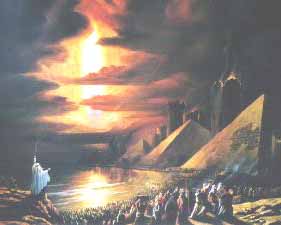 |
There is an interesting possible day-year symbolism suggested by that length of time. It has been proposed that the birth of Jesus Christ on Passover was symbolized by the Exodus at Passover, in that the nation of Israel was "born" on the day of the Exodus after having been gestating in the darkness of Egypt. Even as Israel was "delivered" at its birth, so also was Jesus delivered at birth from the captivity of the womb.[20] Now that analogy can be taken to the next level. The gestation period of Israel was 300 years and the gestation period of the Savior was nearly 300 days.[21] After birth, Israel underwent a 40-year period and the Savior was taken to the temple on his 40th day. Here again might be an example of the day-year symbolism which the Lord often uses.
So what about the 400 years of bondage that the Lord mentioned to Abraham? I don't have an answer, but I know I don't like forcing wild interpretations on a clearly stated meaning in the scriptures. It would be more acceptable to me to think that the 400 years was a mistaken copy of an original prophecy of 300 years, which now appears to be precise. More research is needed to answer this question.
4.4.1 Fourth Generation. At the beginning of this article it was shown that even though Kohath, the grandfather of Moses entered Egypt with Jacob, a 300-year captivity is still possible if both Moses and his father Amram were born when their fathers were over a hundred years old. Even today there are men over a hundred years old fathering children, so that is not an outrageous requirement. The Lord even made a point to Abraham that his descendants would be delivered in the fourth generation (Gen. 15:16). But now consider Jochebed, Moses' mother.
4.4.2 Jochebed. Jochebed was the daughter of Levi, who married her brother Kohath's son Amram. Her age is not given in the Bible, but she would have to have been over a hundred years old when she bore Moses. That does indeed appear to be a problem, especially because the Pharaoh's daughter readily invited her to be the infant's nurse (Ex. 2:9). What's the explanation?
It turns out that the miracle required for this to be true is recorded in Hebrew sources. They state that Jochebed was 126 years old when she married Amram (Jasher 68:2), who was the same age as she and was even born on the same day. Furthermore, a miracle occurred: "Old as Jochebed was, she regained her youth. Her skin became soft, the wrinkles in her face disappeared, the warm tints of maiden beauty returned, and in a short time she became pregnant."[22]
Now is that just an old wives' tale or could that tale of an old wife be true? It comes from a source of Jewish legends that contains a lot of nonsense. How can we tell if it is true? One way is that the evidence in this paper for the Exodus date is so overwhelming, that something like that must be true if the genealogies given are correct. But another way is to notice that enough information was given to narrow down the birth date of Jochebed to within a year. According to the theory being presented in these articles, if the story is true, there should be a rather impressive date in that year linked to the birth of Moses, especially if both parents were born on the same day.
4.4.3 Amram and Jochebed's Birth Date. There is indeed a date 126 years before the alleged time of marriage that does offer some supporting evidence both that Amram and Jochebed might have been born on the same day and were 126 years old at their marriage. The day Sat 12 Feb 1674 BC was a holy day on five of the seven calendars, including being 15 Shebat, 1 Water, 1 Birth (M), and 1 Prime (V). As is well known to the reader by now, it is very unusual for Hebrew and Venus holy days to coincide, and for the Hebrew holy day to be that proposed for Moses' birth, and also to indicate birth on the Mercury calendar only happens about once in 657 years. That is strong enough evidence to recommend this date as worthy of having both parents born on it, foreshadowing the birth of their illustrious son on 15 Shebat.
The precise date of Jeconiah's release is also recorded in holy writ: 25 Adar, year 37 of the Captivity. That corresponds to Tue 16 Mar 560 BC (Jer. 52:31). While that date is nothing special on the Hebrew calendar, it just happened to be the day 1 Wind, the very day his captivity began on the Sacred Round. The hand of the Lord becomes more apparent with each date discovered.
| Event | Sacred Round | Hebrew | Venus | Merc |
|---|---|---|---|---|
| Miriam born | 1 Wind | 1 Ab | 1 Birth | 1 Creation |
| Red Sea Parting | 1 Wind | 21 Nisan | 1 Birth | 1 Creation |
| Enter Canaan | 1 Wind | 1 Nisan | 1 Birth | 1 Creation |
| Jeconiah Captive | 1 Wind | 1 Nisan | 1 Birth | — |
| Exodus Rehearsed | 1 Wind | — | 1 Birth | — |
| Jeconiah Released | 1 Wind | — | — | — |
| Cyrus | 1 Wind | 15 Tishri | 1 Creation | — |
Perhaps more important that the exact date of the Exodus, it was also discovered that several of the dates testify strongly that Jesus Christ was the promised Messiah, and the great prophet who would be like unto Moses. In particular, the dates of the transfigurations of both Moses and Christ were shown to both be on the feast of Tabernacles on two sacred calendars. Moreover, the day beginning the three 40-year periods of Moses' life coincided with the birth date of Jesus Christ. Thus, the symbolism of the sacred calendars indeed witnesses of Jesus Christ and of the creation of the solar system as a precision timepiece.